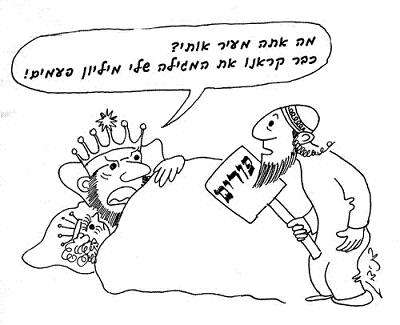
The early sages expressed four opinions about the parts of the Scroll of Esther which must be read in the synagogue on Purim.
1. According to the sage Rabbi Meir one must read the entire Scroll of Esther.
2. According to the sage Rabbi Judah we must read from the verse “In Shushan the citadel there was a certain Jew whose name was Mordecai the son of Yair, the son of Shimei, the son of Kish, a Benjamite” (Esther 2:5).
3. According to the sage Rabbi Yossi, we must read stating at the verse “After these things King Ahasuerus promoted Haman” (Esther 3:1).
4. According to the sage Simon son of Yochai we must read the scroll starting from the verses “That night the king could not sleep…And it was found written that Mordecai had told of Bigthana and Teresh…Then the king said, ‘What honor or dignity has been bestowed on Mordecai for this?'” (Esther 6:1-3).
The scholar Rabbi Yochanan explained the reasoning of the early sages, each according to his exegesis, and how he derived what portion of the text must be read. All the early sages, in his opinion, derived their ideas from the verse in the Scroll of Esther which reads “Then Queen Esther, the daughter of Avichail, with Mordecai the Jew, wrote with full authority to confirm this second letter about Purim. And letters were sent to all the Jews” (Esther 9:29-30). This means that Mordecai and Esther wrote a book (the Scroll of Esther) describing the authority of the story of the Jews of Shushan, capital of Persia. The early sages were divided about what constituted the authority which Esther and Mordecai wrote in their book. According to the sage Rabbi Meir, the authority belonged to King Ahasuerus, so they wrote the entire scroll with which we are familiar. According to the sage Rabbi Judah, the authority was Mordecai’s, so their book began with Mordecai. According to the sage Rabbi Yossi the authority was Haman’s, so their book began with the story of Haman. According to Rabbi Simon son of Yochai the authority was that of the Purim miracle, and that miracle begins when Ahasuerus rewarded Mordecai for saving him, so their book begins with the verse that starts the miracle in motion.
According to a different scholar, Rav Huna, the reason for the disagreement between the early sages is different. He argued that they were divided on the interpretation of the verse “Therefore, because of all the words of this letter, what they had seen concerning this matter, and what had happened to them” (Esther 9:26). The verse states that the letter (the Scroll of Esther) was written to relate “what they had seen concerning this matter, and what had happened to them.” The sage who thought that the whole Scroll should be written and read interpreted the above words to mean that the Scroll describes what Ahasuerus saw and why he acted as he did.
The sage who thought that the Scroll should be written and read from “In Shushan the citadel there was a certain Jew” interpreted the above words to mean that the book describes what Mordecai saw and why he acted as he did. The sage who thought that the Scroll should be written and read from the verse “After these things” interpreted the above words to mean that the book describes what Haman saw and why he acted as he did. The sage who thought the Scroll should be written and read from the verse “That night the king could not sleep” interpreted the above words to mean that the book describes what Ahasuerus saw when he suddenly called for the book of the records of the chronicles to be brought before him.
The scholar Rabbi Chelbo ruled that we read the entire scroll, from start to end. He also ruled that each of the early sages actually thought that the entire scroll must be written, start to end, and their disagreement was only about which portion of the text should be read in the synagogue on Purim.
(Babylonian Talmud, Tractate Megillah 19a)
